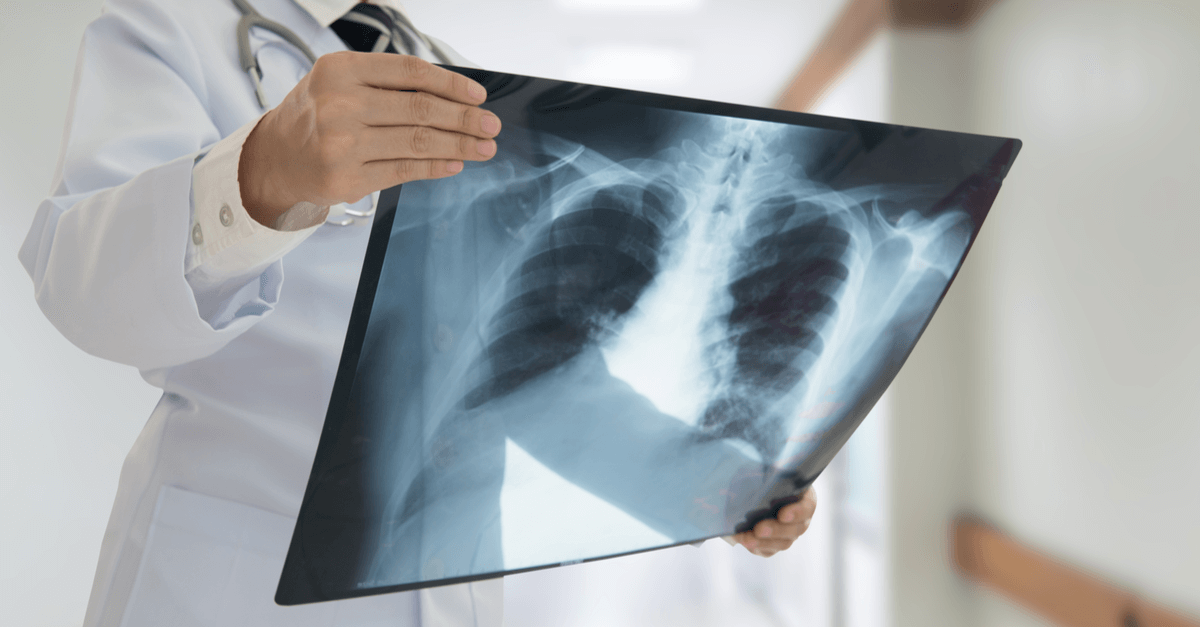Radiology describes a form of medicine where imaging scans are used by doctors and other medical professionals in order to make a diagnosis. Radiology allows medical experts to differentiate between mesothelioma and asbestosis. Both diseases are caused by asbestos exposure, but mesothelioma is a terminal cancer while asbestosis is non-cancerous.
Radiology for Asbestosis-Related Diseases Explained
Radiologists use a wide range of imaging scans in order to confirm a person’s diagnosis. Radiology is very helpful when diagnosing an asbestos-related disease, as asbestos can cause someone to develop one of many different illnesses.
Commonly used radiology tests include:
- X-rays: X-rays use a limited form of radiation known as electromagnetic waves. This kind of imaging creates pictures inside of the body, viewable when tissues absorb the low levels of radiation.
- Positron Emission Tomography (PET) scans: PET scans use a dye with radioactive tracers which are typically swallowed or injected into the body. Using these tracers, doctors can view accurate images of bodily tissues.
- Computed Tomography (CT) scans: CT scans use a combination of X-rays in order to create a cross-sectional image. CT scans typically show much more than X-rays do.
- Magnetic Resonance Imaging (MRI) scans: MRI scans use both magnetic fields and radio waves in order to produce detailed imaging. MRI machines require patients to lay still inside of the tube for a scan to be successfully completed.
Doctors may use one or more of these to help diagnose someone with diseases caused by asbestos, including mesothelioma (a cancer that affects the linings of major organs) and asbestosis (a noncancerous lung disease).
U.S. veterans that believe they have an asbestos-related disease should try and get it diagnosed as soon as possible.
Veterans who served between the 1930s and 1980s have a higher risk because the military heavily relied on asbestos-based products without knowing the dangers. Further, patients with either mesothelioma and asbestosis have better long-term outcomes if they are diagnosed early on.
Mesothelioma Radiology
Mesothelioma can form in different spots throughout the body, including the lung lining (pleura), abdomen lining (peritoneum), heart lining (pericardium), and testicle lining (tunica vaginalis).
Because of this, mesothelioma radiology scans will be performed depending on where the patient is experiencing discomfort. These radiology scans look for possibly cancerous tumors or masses.
The most common radiology scan for mesothelioma is the CT scan. CT scans can help determine how far the cancer has spread — accurate staging of mesothelioma is key to providing the proper treatments for it.
PET scans may be used to distinguish between cancerous and noncancerous thickening of the pleura and to see if the cancer has spread to the lymph nodes.
While not often used, MRIs may help doctors break the cancer down into stages if needed.
Asbestosis Radiology
If a patient might have asbestosis, doctors will typically perform X-rays or CT scans of the chest and look for any abnormalities in the lungs.
Unlike mesothelioma, asbestosis affects the lungs themselves — not the lung lining. Asbestosis also does not develop in other parts of the body so there’s no need to perform radiology scans in other areas.
Asbestosis makes the lung tissue appear whiter and more opaque than usual, which doctors will look for in imaging scans.
Doctors can also check for possibly cancerous tumors within the lungs using these scans, as patients exposed to asbestos also have a higher risk for lung cancer.
After Radiology Scans For Asbestos Diseases
Once radiology scans have been completed, doctors will need to complete the diagnosis in one of a few ways.
In cases where mesothelioma is suspected, a biopsy must be performed. A biopsy is a sample of fluid or tissue from the possibly cancerous tumor. Doctors will then examine the biopsy sample under a microscope to determine if cancer cells are present.
If a patient might have asbestosis, doctors may perform lung functioning tests to determine how badly the lungs have been damaged. They may also perform tests such as a thoracentesis (extraction of fluid using a needle) or a bronchoscopy (tube insertion into the lungs) to determine if cancerous cells might also be present.
All of these techniques will be used to confirm a patient's asbestosis or mesothelioma diagnosis and from there, doctors can recommend proper treatments.
How Can Veterans Get Radiology Scans For Mesothelioma & Asbestosis
Whether a veteran believes they might have asbestosis or mesothelioma, they have plenty of options to get properly diagnosed.
For example, some of the world's best mesothelioma specialists are partnered with the U.S. Department of Veterans Affairs (VA) to provide healthcare for veterans. Veterans can pursue a diagnosis and treatments from these specialists if they have VA Health Care.
If veterans do not want to work with the VA, they can pursue a diagnosis through civilian doctors.
Our team can help veterans connect with doctors both in and outside of the VA — get a free veterans packet to learn more.


